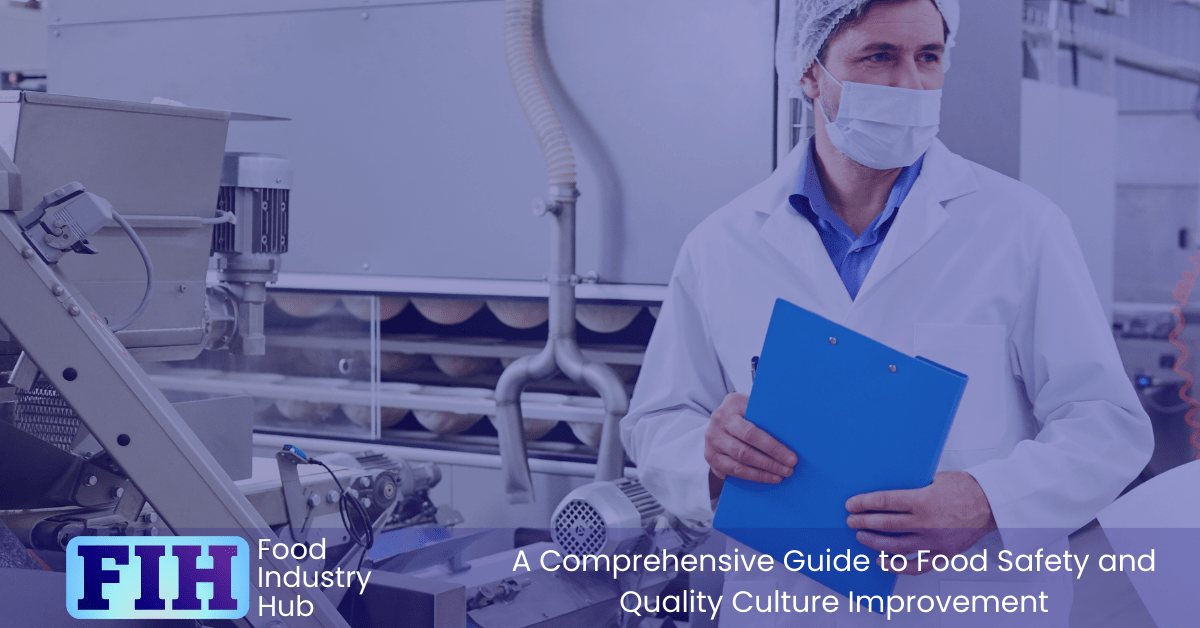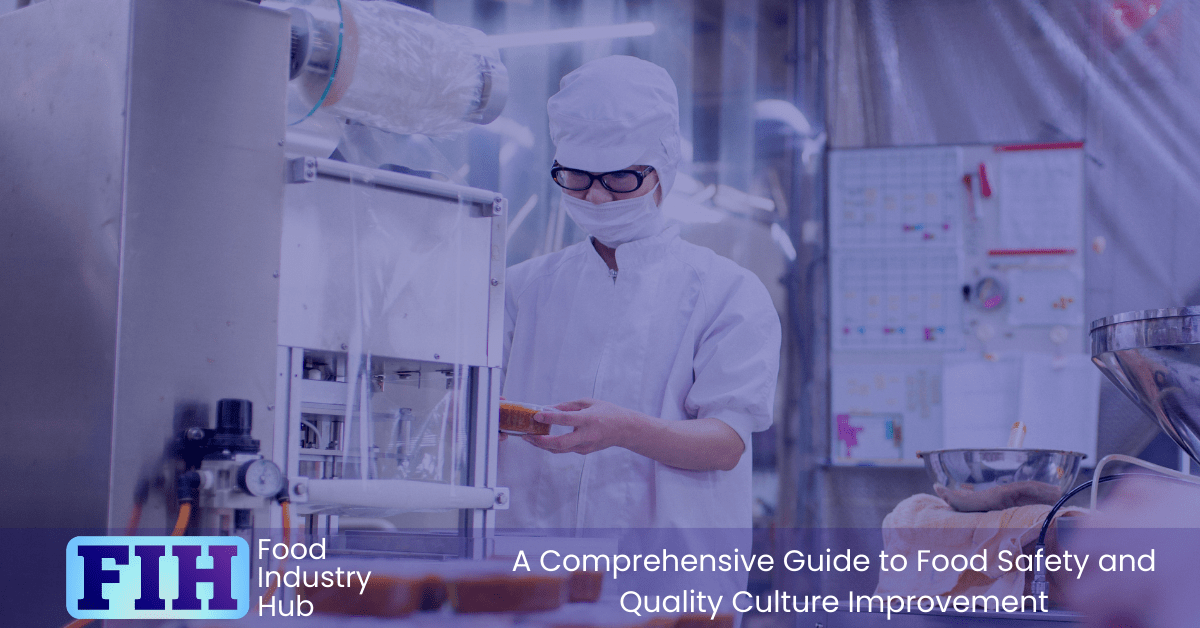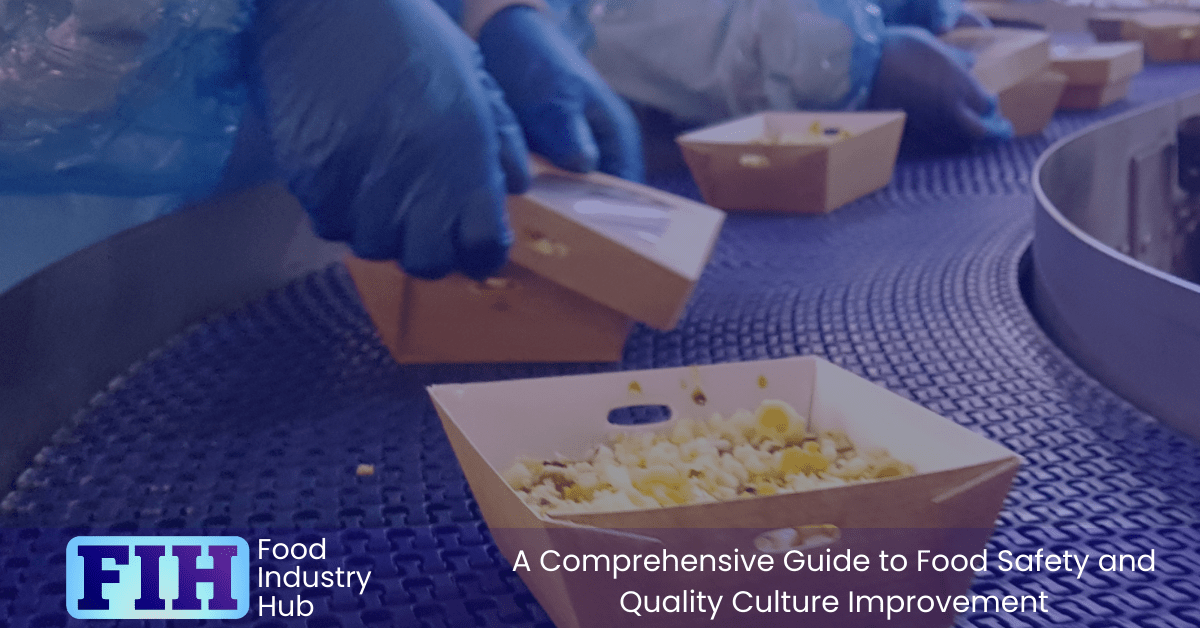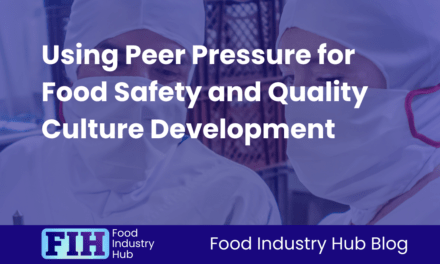Introduction
In this post, we’ll discuss the nature of food safety and quality culture and how it’s defined. We’ll touch on measurement/evaluation and how best to assess your food safety and quality culture. We’ll also go on to explore some of the ways you can improve and develop your culture of food safety and quality.
Table of Contents
Key Takeaways
- Food safety and quality culture is made up of values/ideals – which shape attitudes/beliefs – which are expressed as actions/behaviours.
- Food safety and quality culture can be measured/evaluated through a combination of surveys and observations of behaviours.
- The best way to influence culture is through values/ideals, as these will cascade down through attitudes/beliefs and ultimately actions/behaviours.

Understanding Food Safety Culture
‘Culture’ is the shared attitudes, beliefs, and behaviours across a group of individuals. Importantly, only the shared attitudes, beliefs, and behaviours form the culture – so if one individual has an attitude or expresses behaviours which are not shared by other members of the group, then those attitudes and behaviours are separate to the culture of the group.
When we talk about ‘food safety and quality culture’, we’re referring to the aspects of an organisation’s culture that influence the safety and quality of food, and the way it’s prepared.
There’s a structural hierarchy in the way organisational culture is formed and expressed:
Values/ideals dictate the priorities that get acted upon, as well as influencing the attitudes and beliefs held by members of the group.
If you value food safety and quality, then you will make it a priority to protect food safety and quality ideals.
Attitudes/beliefs are descriptions for how values/ideals are converted into behavioural actions.
If you value food safety and quality, then you will have a positive attitude toward actions that serve food safety and quality ideals. You will believe that it is best to act in ways that are protective of food safety and quality, based on your positive disposition toward food safety and quality.
Actions/behaviours are the physical manifestation of attitudes and dispositions.
If you have a positive attitude toward food safety and quality, then your disposition will be manifested through actions and behaviours that serve the food safety and quality values/ideals that shape your attitudes and beliefs.

Measuring Food Safety and Quality Culture
Values and attitudes cannot be directly accessed and measured because they are not physical and are not subject to direct assessment. Even if you have people complete a confidential survey, the survey results are behavioural expressions which may or may not accurately reflect the ideals and dispositions of respondents. I.e., responding to a survey is an action, and people may intentionally or unintentionally misrepresent their actual attitudes and beliefs.
The problem is compounded by the fact that a single respondent can only represent their own attitudes and values, while culture is made up of values/ideals and attitudes/beliefs shared throughout a group. An average of multiple responses can be taken where a multiple-choice question format is used, but the average of responses may not reflect any individual’s values or attitudes – and the average may not even be representative of the group’s cultural ideals.
With all this in mind, it’s useful to consider survey responses to be an unreliable indication of the attitudes and values held by members of a group. Useful, but not the full picture.
A good way to assess food safety and quality culture would be to observe actions and behaviours (both of individuals when they are by themselves and when they are with other people) to infer attitudes and dispositions – and put that information alongside survey results. That would enable you to determine whether the survey results are consistent or inconsistent with the behaviours and actions of members of the group.

Sign-up for the Food Industry Hub Mail Service
We regularly produce new content for food industry professionals, and the Food Industry Hub Mail Service is the best way to stay up to date with the latest additions.
Signup today to be added to the Food Industry Hub mailing list.
Developing The Food Safety and Quality Culture
Understanding the hierarchical nature of the elements of food safety and quality culture, it’s clear that the most effective way to shape the culture would be to instil food safety and quality values/ideals primarily – and allow those values/ideals to cascade into attitudes and behaviours.
This approach would be in contrast to trying to enforce behaviours without having first influenced values and attitudes. There’s really no point in trying to make people behave in ways that contradict their attitudes/dispositions. It’s certainly true that you can force someone to do something while you’re standing there watching them, but it’s only the fear of reprisal that motivates the behaviour – so as soon as you’re not there watching, the behaviour reverts.
If you can successfully instil values oriented around food safety and quality, then the attitudes/dispositions of people who make up your internal culture will naturally manifest as actions and behaviours that promote food safety and quality. You want people to be motivated by their sincerely held values rather than instruction and enforcement.

Training Employees on Food Safety and Quality Practices
Training is one of the best opportunities to influence employees’ values and attitudes. The key thing is not only to convey knowledge, but also to instigate buy-in and understanding of significance/importance. When people come away from training sessions, they shouldn’t just know what’s expected from them or how to complete a task – they should be thoroughly grounded in the reasons for doing things in the way they’ve been taught and why it’s significant for food safety and quality.
It’s often said that you can only hold someone accountable for doing something right if you have a signed training record to show that they understood what was expected from them. You can’t subject someone to disciplinary proceedings if you haven’t first trained them. This is, of course, the sort of sentiment that only gets expressed within a culture of blame and punishment – which is not at all desirable for a culture of food safety and quality. The point of training is education and understanding, not blame and accountability.

Engaging Employees in Food Safety and Quality Improvement Initiatives
To foster a culture of safety and continuous improvement, actively involve your employees in food safety and quality initiatives.
Engaging your employees in improvement initiatives is important for creating a strong safety and quality culture. By involving them in the process, you empower them to take ownership of their actions and outcomes.
Encourage open communication and provide opportunities for feedback and suggestions. This won’t only increase employee engagement but also help identify potential hazards and areas for improvement that may have otherwise been overlooked.
Including employees in the design and rollout of new initiatives serves the dual purpose of securing buy-in and capturing valuable inputs from front line workers. People will naturally be more engaged in initiatives that they have contributed to, and it’s a Kaizen principal that there’s valuable information held by people responsible for undertaking works. There’s really nothing but upside in directly engaging employees in new food safety and quality initiatives.

Communicating and Reinforcing Food Safety and Quality Messages
Clear and consistent communication of food safety and quality messaging is foundational for ensuring that all employees are aware of the expectations and values that should be upheld throughout the business. Messaging can be delivered through posters/displays, text and images on record sheets, inclusion in procedures and training documents, and verbal delivery.
The messaging should communicate and bolster food safety and quality values and ideals – and, where appropriate, offer situation-specific guidance and instruction.
Think about this as marketing for your food safety and quality culture. If you wanted to market/advertise a product, you might have posters and magazine adverts to promote awareness and showcase the features and benefits so that people were enticed into buying. Food safety and quality messaging is similar – so you want to have lots of visibility and content that promotes food safety and quality ideals. You’re not trying to get people to buy a product – you’re trying to get people to buy into or embrace food safety and quality values.

Fostering a Culture of Open Communication
Encourage employees to freely share their ideas and concerns regarding food safety and quality. Creating an environment where employees feel comfortable expressing themselves is essential for improving overall food safety and quality culture.
Encourage regular team meetings or discussions where everyone has an opportunity to contribute. Implement suggestion boxes or online platforms where employees can submit anonymous feedback. Emphasise the importance of constructive criticism and make it clear that all input is valued.
Actively listen to your employees’ concerns and ideas, and address them promptly. Demonstrating openness and receptiveness to feedback will encourage employees to speak up and feel empowered to contribute to the improvement of food safety and quality.

Recognising and Rewarding Food Safety Excellence
Employees who demonstrate food safety excellence should be recognised and rewarded. By acknowledging and rewarding their efforts, you create a culture that values and prioritises food safety.
Recognition can take many forms, such as verbal praise and announcements. It’s important to publicly acknowledge the individual or team’s commitment to food safety, as it not only boosts morale but also inspires others to follow suit.
Rewards can include monetary incentives, promotions, or additional training opportunities. These rewards not only show appreciation for their hard work but also incentivise others to strive for food safety excellence.

In Summary
So now that you have a comprehensive guide to food safety and quality culture improvement, it’s time to put it into action.
By understanding food safety culture, assessing current practices, identifying risks, and establishing objectives, you can implement robust standard operating procedures and foster a culture of open communication.
Encourage employee reporting and recognise excellence while staying up-to-date with industry best practices.
With these steps, you’ll be on your way to ensuring a safe and high-quality food environment.

From The Food Industry Hub Knowledge Centre
Featured pages from The Food Industry Hub Knowledge Centre:
Further Resources
Food Industry Hub serves the food industry with a range of digital resources for the benefit of both commercial food manufacturers and food industry professionals.
For food manufacturers, we offer integrated management systems that give every user a direct interface with your QMS.
For food industry professionals, we provide an extensive signposting service in addition to informational content we hope you’ll find useful as you face new professional challenges. We have very ambitious plans to expand the range of services offered, and currently present informational content on management, safety and quality, and professional success.














